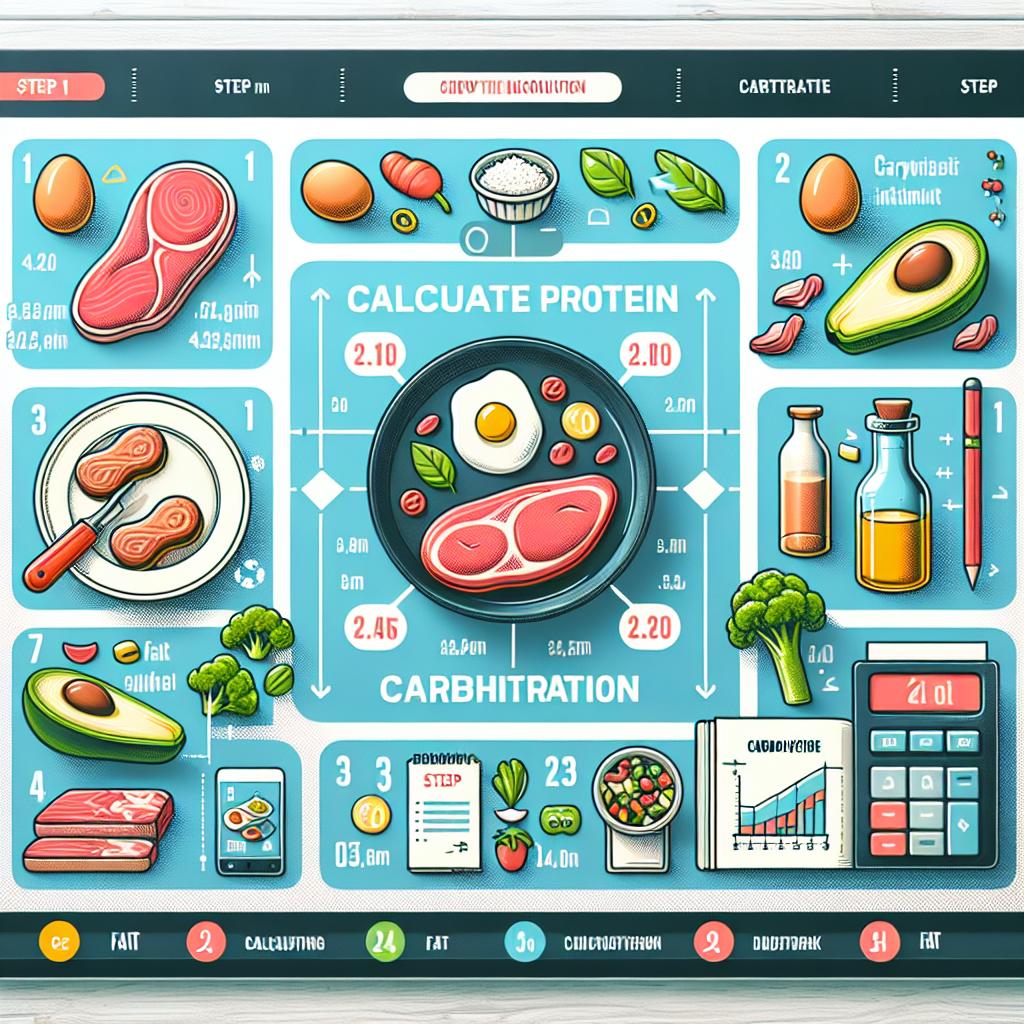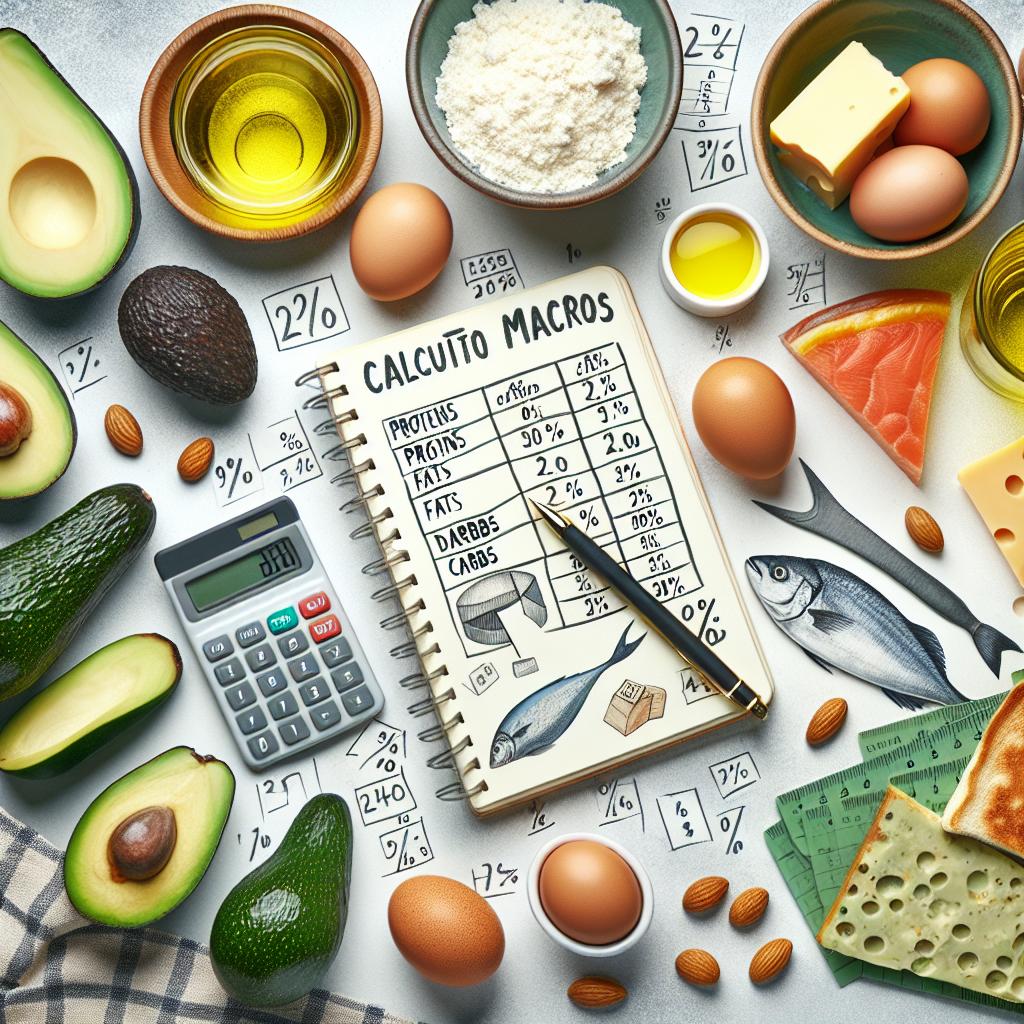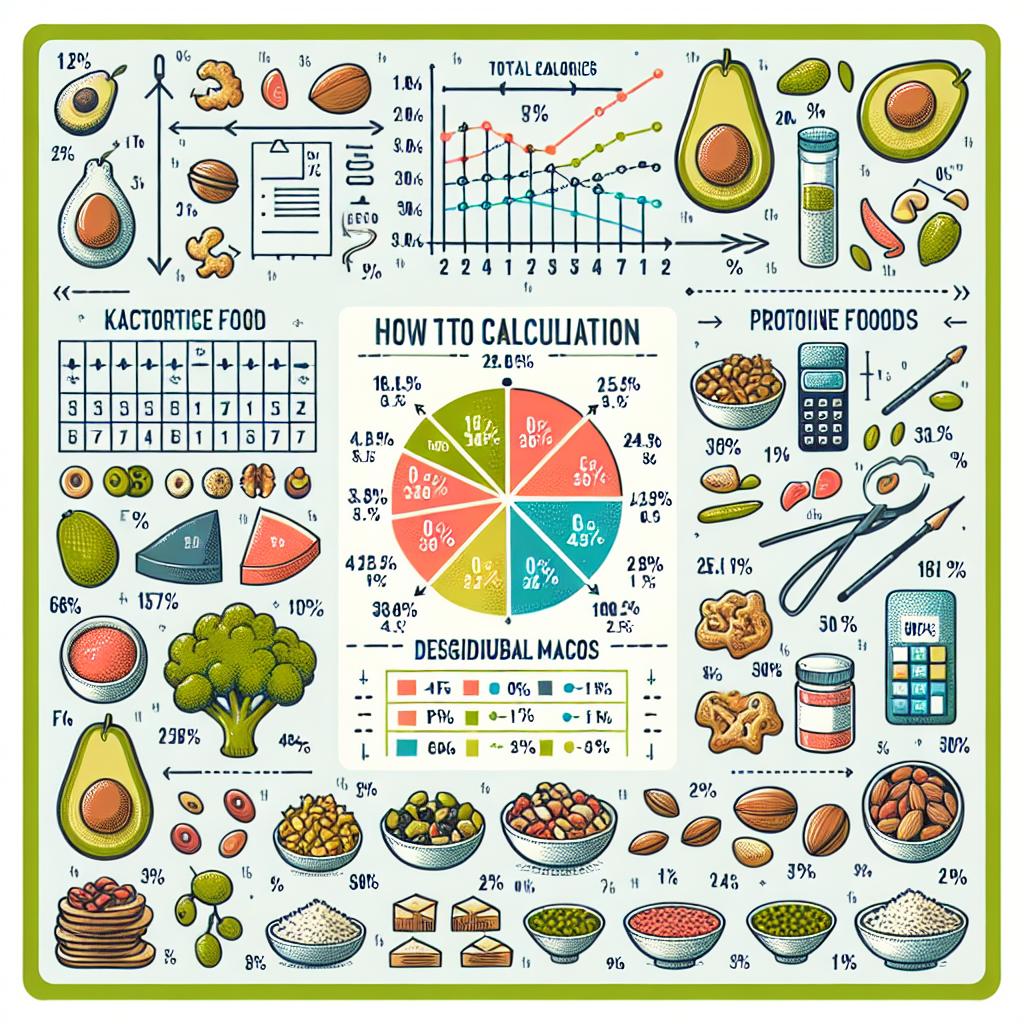This post may contain affiliate links which means I may receive a commission for purchases made through links. Learn more on my Private Policy page.
Unlocking the Secrets of Keto: Your Friendly Guide to Macro Mastery
Welcome to the wonderful world of the ketogenic diet, where delicious food meets a savvy nutritional strategy! If you’ve ever felt overwhelmed by numbers, percentages, and the seemingly endless calculations that come with tracking your macros, you’re not alone. Many who embark on their keto journey find themselves wondering how to balance those tantalizing fats, proteins, and carbs to fuel their bodies while still enjoying mouthwatering meals.
But fear not, fellow keto adventurer! In this article, we’re going to break down the art of macro calculation into bite-sized, easy-to-digest pieces. Whether you’re a curious newcomer or a seasoned low-carb dieter looking to fine-tune your approach, we’re here to guide you every step of the way. So grab a comfy seat, perhaps a slice of creamy avocado, and let’s dive into how you can effortlessly calculate your macros for a successful ketogenic lifestyle—full of flavor and vitality!
Understanding Macronutrients and Their Role in Keto
To effectively navigate a ketogenic lifestyle, it’s essential to grasp the fundamentals of macronutrients—fat, protein, and carbohydrates. Each of these plays a distinct role in the body, particularly when aiming to achieve and maintain a state of ketosis. With the keto diet emphasizing high fat intake, moderate protein consumption, and very low carbohydrates, understanding how to balance these components is crucial. Here are the primary macronutrients to focus on:
- Fats: The cornerstone of your keto diet, providing energy and supporting hormonal balance.
- Proteins: Important for muscle preservation, repair, and supporting various bodily functions.
- Carbohydrates: Typically restricted to a very low level to promote ketosis.
Calculating your macros properly is like using a tailored recipe—each ingredient must be just right! A common ratio for a keto diet might be around 70% fat, 25% protein, and 5% carbohydrates. To simplify macro calculations, consider tracking your daily intake using a table:
| Macronutrient | Daily Percentage | Grams (based on 2,000 Cal/day) |
|---|---|---|
| Fat | 70% | 155 grams |
| Protein | 25% | 125 grams |
| Carbohydrates | 5% | 25 grams |
By prioritizing these macronutrient ratios and monitoring your intake, you can create a diet that not only fuels your body but drives you towards those keto goals. Every meal becomes an important piece of the puzzle, helping you steer clear of carb-laden pitfalls and stay focused on the rewarding benefits of a high-fat, low-carb lifestyle.

Finding Your Perfect Macro Ratio for Success
Achieving success on a keto diet is largely about finding the right balance of macronutrients that works for your body. Whether your goal is weight loss, enhanced energy, or improved mental clarity, tailoring your macro ratio can make a significant difference. Generally, the keto diet emphasizes a higher intake of fats, moderate protein, and minimal carbohydrates. A common guideline is to aim for 70-75% fat, 20-25% protein, and 5-10% carbohydrates. However, personal factors such as age, gender, physical activity levels, and metabolic health can influence what’s optimal for you.
To determine your ideal macro ratio, you can start by calculating your total daily energy expenditure (TDEE). Once you know how many calories you need, you can allocate them to each macronutrient based on the percentages mentioned above. It can be helpful to use a simple table for visualization:
| Macronutrient | Percentage | Calories (for 2000 kcal) |
|---|---|---|
| Fats | 70% | 1400 kcal |
| Protein | 25% | 500 kcal |
| Carbohydrates | 5% | 100 kcal |
In addition to these calculations, experimenting with these ratios and observing how your body responds can lead to adjustments that suit your lifestyle and preferences. Keeping a detailed food diary or utilizing apps designed for tracking macros can facilitate this process. Remember, finding your perfect macro ratio is a personal journey that may require some trial and error, so stay patient and enjoy the ride!

Smart Tools and Apps to Help You Track Your Intake
Keeping track of your macro intake while following a keto diet can be streamlined with the right tools and applications. Numerous platforms allow you to log your meals, track nutrients, and stay within your desired macro ranges. Consider using apps such as:
- MyFitnessPal – With a large database and barcode scanner, it’s simple to log your food intake.
- Carb Manager – Tailored specifically for low-carb diets, it highlights carb counts while giving a detailed nutrient breakdown.
- SparkPeople – This versatile app not only tracks macros but also includes workout routines to enhance your fitness journey.
For a more personalized experience, you can create a simple tracking template. Below is an example of how to set up your daily intake checklist:
| Macro Type | Target Amount (g) | Actual Amount (g) | Notes |
|---|---|---|---|
| Fat | 70 | 65 | Good range |
| Protein | 50 | 55 | Adjusted for workout |
| Carbs | 20 | 15 | Perfect! |
By leveraging these modern tools and creating a personalized tracking system, you can stay organized and focused on your keto journey. Take advantage of reminders and notifications within these apps to keep you on track, making adjustments to ensure you meet your macro goals while enjoying the process of gourmet low-carb eating!

Sticking to Your Macros: Tips for Staying on Track
Staying committed to your macro goals can sometimes feel like navigating a maze, especially on a Keto diet. One effective way to keep your focus sharp is to plan your meals ahead of time. Consider creating a weekly menu that aligns with your macro targets. This not only saves you time during the week but also reduces the temptation to stray from your plan. Incorporating a color-coded meal prep system can add a fun twist. For instance, use green containers for healthy fats, blue for proteins, and yellow for low-carb vegetables. This visual representation can serve as a constant reminder of your goals.
Another essential tool in your arsenal is a food journal or an app to track your daily intake. There are many user-friendly apps available that can help you log everything you consume and see how it aligns with your macro targets. Additionally, don’t underestimate the power of community support—engaging with online forums or Keto support groups can provide inspiration and accountability. Share your progress or struggles; you never know who you might inspire along the way. Remember, every small victory counts, and consistency is key to mastering your macro journey.
Q&A
Q&A: How to Calculate Your Macros on a Keto Diet
Q: What exactly are macros, and why are they important on a keto diet?
A: Great question! “Macros” is short for macronutrients, which include carbohydrates, proteins, and fats. On a ketogenic diet, the goal is to dramatically reduce carbs and up the fats to put your body into a state of ketosis. This means your body will start to burn fat for fuel instead of carbs. Knowing your macros helps you ensure you’re hitting the right balance to stay in ketosis and achieve your health goals.
Q: How do I figure out my daily macro needs for keto?
A: Time to grab your calculator (or maybe just your phone—who uses a calculator anymore?). Start by determining your daily caloric needs, which can vary based on factors like age, sex, weight, and activity level. Once you have your total calories, the keto macro ratio is generally around 70% fat, 25% protein, and 5% carbs. You can adjust this slightly based on personal goals, but that’s a solid starting point!
Q: Are there any tools or apps that can help me track my macros?
A: Absolutely! There are several handy apps like MyFitnessPal, Cronometer, and Carb Manager that can help you track your food intake and calculate your macros effortlessly. They usually have extensive databases of foods, so you can easily log your meals and see how they fit into your daily goals. Plus, they can be quite motivating!
Q: What types of foods should I focus on to meet my keto macros?
A: Think delicious healthy fats like avocados, olive oil, nuts, and seeds. For protein, go for options like fish, chicken, and grass-fed beef. And when it comes to carbs, keep it leafy and green—lots of leafy vegetables! Remember to avoid starchy foods like bread, pasta, and most fruits. The good news? There are tons of tasty keto recipes out there to keep you drooling while you stay on track!
Q: How often should I be recalculating my macros?
A: It’s a good idea to check in on your macro ratios every few weeks, especially if you’re losing weight, gaining muscle, or changing your activity level. As your body composition shifts, so will your macro needs. Stay flexible and adjust as necessary to keep your keto journey vibrant and effective!
Q: What if I accidentally go over my carbs one day?
A: Oops! It happens to the best of us. If you exceed your carb limit, don’t beat yourself up about it. Just get back on track at your next meal! Keto is more about the long-term journey than about perfection. Remember, every day is a new opportunity to make delicious low-carb choices!
Q: Can I enjoy treats while calculating macros?
A: Yasss! There are plenty of keto-friendly treats out there. Just be sure to check the labels and fit them into your daily macro count. Things like sugar-free chocolate, keto cupcakes, and even homemade ice cream can definitely make an appearance—just keep an eye on those carb counts!
Q: Any tips for staying consistent with my macro calculations?
A: Absolutely! Meal prepping is your friend! Plan your meals and snacks ahead of time, ensuring you stay within your macros. Also, keep a food diary or use those tracking apps so you can see how well you’re doing. That little extra effort can make it way easier to stick to your goals and enjoy the journey—even if it means saying “no” to the bread basket!
Feel free to reach out if you have more questions—happy calculating and keto-ing! 🥑💪
To Conclude
As you embark on your keto journey, remember that calculating your macros is like crafting a delicious recipe—each ingredient plays a vital role in achieving that perfect balance! With a little practice and patience, you’ll soon find yourself mastering the art of macro management, ensuring you reach your health goals while savoring every bite. Whether you’re prepping a hearty cauliflower dish or whipping up a creamy avocado smoothie, keeping tabs on your macros will empower you to make informed choices that suit your lifestyle.
So, go ahead and experiment! Don’t be afraid to fine-tune your Macronutrient ratios based on how your body responds, and above all, enjoy the process. After all, a keto diet is not just a mere regimen; it’s a celebration of flavors, creativity, and nourishment. With your newfound knowledge, you’re well-equipped to enjoy all the benefits of this lifestyle while relishing each delicious moment. Happy counting, and cheers to your health—your keto adventure has only just begun! 🌟🥑✨

